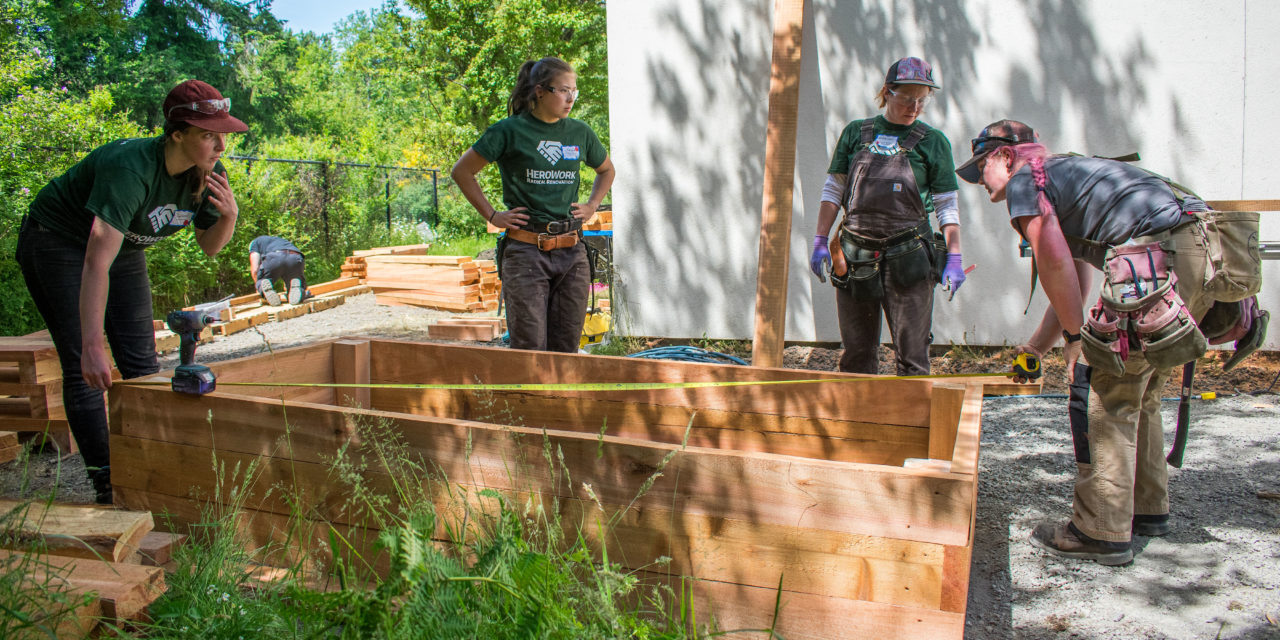BC – Building change was boosted twice over at a special event the first weekend in June.
First a director of the BC Tradeswomen society – a governing partner of the BC Centre for Women in the Trades (BCCWITT), organized a large group of area tradeswomen into a work party. The event included mentors to help them hone their skills and get on-the-job tips from experienced tradeswomen.
“You almost never see a woman on a jobsite,” said Kristine Byers, a Red Seal carpenter and recruiter for the BC Regional Council of Carpenters (BCRCC). Therefore, being able to work in a group with other women was unusual. “We were able to do impromptu mentorship, explain issues relevant to female tradespeople, and share techniques.”
Second, the project they selected was itself about change. The group worked on a current volunteer HeroWorks initiative to transform a former juvenile detention centre into a recovery centre. Local trades are volunteering their time to the renovation. Once completed, the facility will provide small, private rooms for previously homeless men. The space will include a shared dining room, activity spaces, and support services to help the residents rebuild their lives.
Participants in the BCCWITT project – who are themselves harbingers of change – worked as weekend volunteers to support change for others.
This changing of expectations to increase the number of women in trades was enhanced in 2017, when BCRCC representative Jordan Kersch approached Camosun College Training Coordinator Karen McNeill.
Karen developed a Women in Trades training program, which encouraged women to consider the trades as a viable career. Similar programs are now offered by GT Hiring Solutions, Vancouver Island Construction Association, John Howard Society, and School District 62.
To further encourage women to shift careers into the trades, the program found equivalencies between previous jobs and jobsite work. Soft skills like communication, project management, and problem solving are needed both for a coffee shop and for a construction site. Identifying these transferrable skills made it possible for women to leverage previous work experience into their new careers.
The building boom in Victoria opened apprenticeship placements for women, especially in carpentry. Training costs are covered by the Union. Apprentices receive top industry wages and benefits.
As the women sign on, a building boom and worker shortage give the industry good reason to ignore gender. Jordan noted feedback from contractors is positive: crews with female members tend to meet or exceed deadlines.
Early numbers are encouraging. Between 2015 and 2018, the percentage of women on BCRCC job sites jumped from 2 percent to 4.3 per cent.
“Women can do these jobs,” said communications lead Travis Tambone. “We want women to start choosing the trades as their first career option.”

